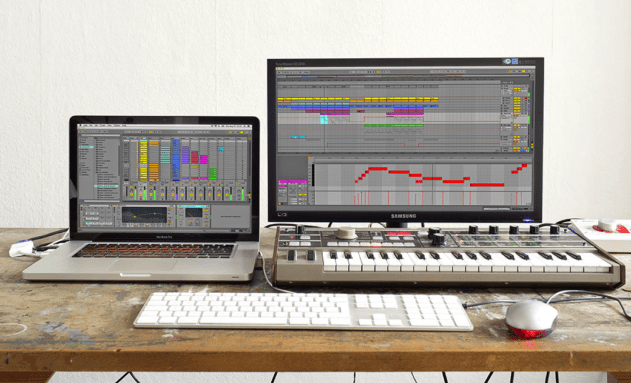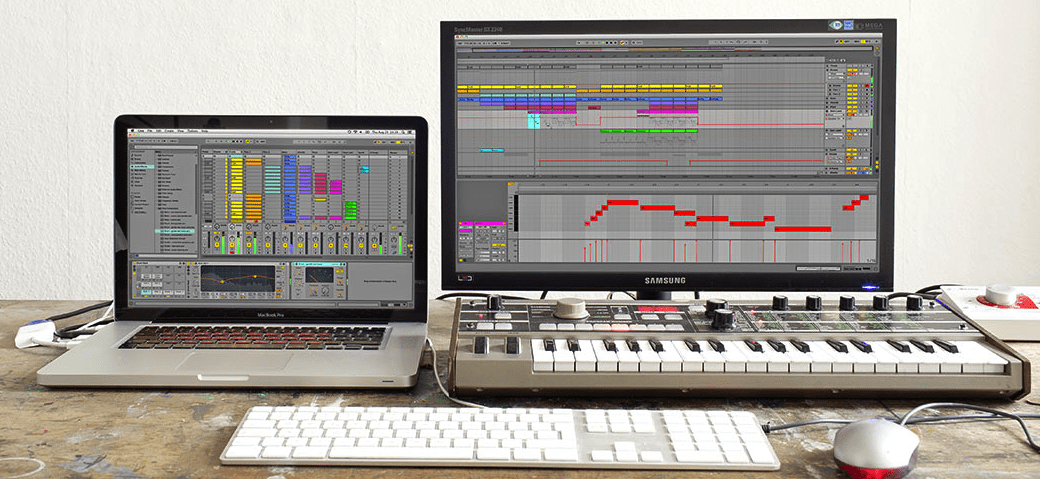We break down some of the most cost-effective ways to improve your creative process, from optimising your monitoring system to adding affordable new tools to your setup.

It’s all too easy to fall into the trap of thinking you need to spend a lot of money to make good music. The truth, as Thomas Cox explained in his recent Attack column, is that expensive gear doesn’t matter so much as good ideas and creativity. It’s tempting to think that spending thousands on new synths and drum machines will automatically make your music better – or that you just can’t make good music until you buy that fancy new piece of hardware – but that doesn’t have to be the case.
Nevertheless, sometimes you do need a little something to revitalise your creativity, force you down a new direction or just improve your ability to get the most out of what you already have. The great news is that there are plenty of cheap ways to do exactly that. Improving your workflow on a budget could be as simple as downloading a free piece of software, improving your studio setup or simply rethinking part of your approach. They’re not always the most glamorous options, but glamour alone never produced a great track. Join us as we run through some of the most affordable ways to revitalise and refine your creative process…
Free Plugins
Where better to start than with the cheapest option of all? The old adage may tell us that there’s no such thing as a free lunch, but the sole exception to that rule might be in the digital world. The plugin landscape is wide and varied, with much publicity given to the latest and greatest instruments and effects from the big players. Often – but not always – commercial software companies can afford to employ the best designers to create the nicest-looking interfaces, or hook up with hardware manufacturers to deliver an ‘authorised’ emulation. However, there are also some fantastic cheap (or entirely free) options. Here are some of our favourites:
Togu Audio Line (TAL) is now best known for its excellent Roland Juno-60 and SH-101 emulations, but the company began life making free plugins. The pick of the bunch are the U-NO-62 synth and TAL-CHORUS-LX effect. U-NO-62 isn’t quite as realistic as the paid emulation, but it’s still a great synth in its own right. TAL-CHORUS-LX is exactly the same as the excellent chorus in U-NO-LX. They’re must-haves for anyone into classic analogue sounds, and available for both Mac and PC.
Melda Production’s MFreeEffectsBundle is a huge package of tools and utilities in Windows and Mac VST and AU formats. The range of filters, modulation effects and dynamics tools on offer is fairly straightforward, but these effects offer a useful addition to the standard plugins found in your DAW. For PC users, the Variety Of Sound collection offers a similar collection of EQs, reverbs, tape emulation and more.
E-Phonic’s Drumatic 4 is a very affordable drum synthesis tool for Mac and PC, but if your budget’s even more limited (and you’re on a PC) then version 3 is the way to go – it’s still available as donationware.
There are now hundreds of free instruments, effects and sample packs on the market, but there’s one important thing to remember: not all of them are any good! Don’t fall into the trap of thinking more plugins in your menu must be better. Remember that sometimes too much choice can be just as bad as not enough.


07.59 PM
Thanks a lot for this very usefull article.
08.59 PM
Great article : one doesn’t need lots of stuff to achieve great ideas.
Always focus on the ideas, not on the gear.
I would also add that a few cheap tricks can strongly improve your listening accoustics. Read SoundOnSound articles in their archives on that matter (Studio SOS). I lost so many many years working in poor acoustics. Now that I solved this problem is like if I had a new pair of expensive speakers.
09.16 PM
On a 24bit system, you have to have your master at -72db to mix at 12bit, I frankly doubt anyone mix at those levels.
11.14 PM
finally someone’s addressed the reality of the situation. some much needed pragmatic advice
12.29 PM
Nice article that addresses many things that I have stumbled on. Such as when I adjusted my seat to my keyboards high enough caused me legs to hurt above and behind the knees because my feet didn’t touch the floor well enough. The solution was to lower the keyboard stand.
Few hints and my learning experience:
The modern computer master volume is outside the bit domain of the soundcard. and won’t cause degradion Use that if you have nothing else. Even the most basic built in audio chipset is at least 24 bit nowadays anyway.
The german Beat magazine has several free plugins that are excellent.
drumMic’a is a good free drum plugin.
I spent around 9 days in selecting a DAW few years ago. A one called Energy XT was by far the easiest to learn in my opinion. but deceptively powerful. The drawback is that the looks are dated and until recently not in much development.
I own now couple of other DAWS, but it is still my favorite.
Cakewalk has often excellent sales on their synths and their entry level DAWs at great discounts.
Isotope Nectar Elements is often on sale and powerful and easy to use plugin for voice.
Today I mainly use 3 commercial synths. The reason is that I invested time in studying them (as this artivce recommends and found that I could do virtually anything that I need). One is sample based, one a hybrid and the third is analog.
I found out I was spending to much time in checking out free synths. Don’t do the same, select rather few and stick to them.
I use mostly free effects or the ones that come with my DAW’s, (apart from Nectar Elements). I find it sufficient and think it will suffice most people (non pros).
I found creating a whole song a bit overwhelming. By sticking to smaller pieces but doing them well increased my confidence.
My other weak point was lack of experience with drums. Using and studying midi drum clips and modifying them rather then creating new beats, helped a lot in the beginning.
Also realizing that I spent too much time in tweaking sound of the beat in the beginning as I had wrong ideas of how it would sound in the final mix.
02.48 PM
Yup – even though on a 24bit system, using only 12-bits is theoretically down at -72db and Javier Z mentions that people don’t mix at that level, you’d be surprised at the way some people set their gain structure in a DAW – especially when using buses/groups, and then use the DAW’s output level as an overall monitoring volume control.
So 12-bits isn’t necessarily common, but i’ve seen it.
12.21 PM
Speaker placement:
” NOT TOO NEAR THE REAR WALL, ”
Well, Genelec recommends to keep the speakers either on the back wall or over 1 meter from the backwall. Backwall being as good as one meter. For most homestudios it’s better to have speakers on the backwall for most controll over the sound.